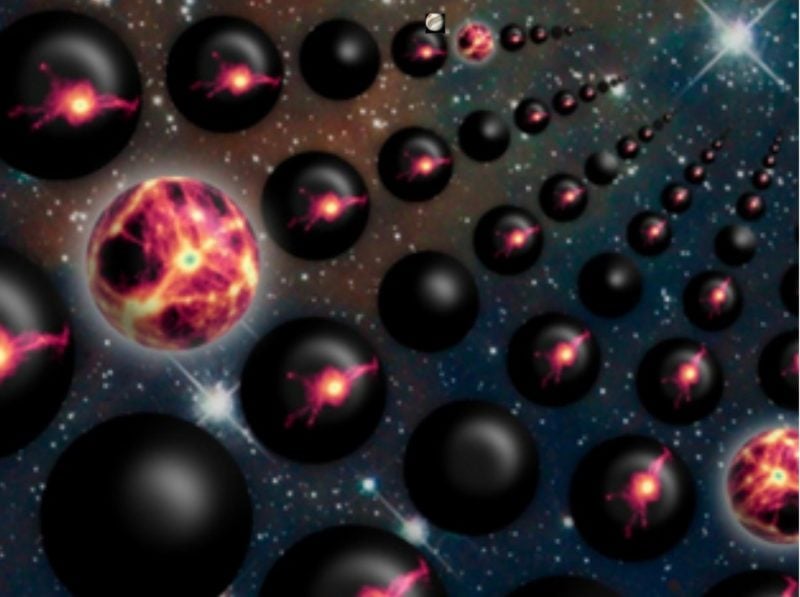Scientists believe that there are more universes other than the one that we live in and that combined, all those universes are “multiverse.” The dark energy accounts for over 68% of the total energy in the universe. That same energy could be causing its accelerating expansion, which is low. The amount of the dark energy, lower than previously thought to be in the previous theories about the origin of the universe, is a factor which results in life existing in the universe, however, is there life in multiverse that we don’t know about?
Given that there is life in our universe, our universe is considered a lucky one, especially because more dark energy would mean that the universe’s expansion rate would be much higher, causing matter to be diluted to form stars and planets. In such a scenario, life as we know it wouldn’t be able to form, as the universe would be dead, like the rest of the universe, which in theory has higher amounts of dark energy.
A recent renewed simulation of the universe shows dark energy levels are hundreds of times higher than observed in our universe and that they wouldn’t affect the formation of stars and planets. That being said, life in multiverse would likely be possible in some other universe within it.
Jaime Salcido, a postgraduate student at Durham University’s Institute for Computational Cosmology in the United Kingdom, and lead author of a research paper on the subject, said in a statement Sunday: “For many physicists, the unexplained but seemingly special amount of dark energy in our universe is a frustrating puzzle. Our simulations show that even if there was much more dark energy or even very little in the universe then it would only have a minimal effect on star and planet formation, raising the prospect that life could exist throughout the multiverse.”
Other than raising the possibility of life in multiverse being possible, there is another result that came with the simulation of the cosmos related to the multiverse theory which is the last paper of the late Stephen Hawking. The theory itself tries to explain the anomaly between the theoretical and observed amounts of dark energy to the universe, as well as its relation to how stellar and planetary bodies start to form.
“The multiverse was previously thought to explain the observed value of dark energy as a lottery — we have a lucky ticket and live in the universe that forms beautiful galaxies which permit life as we know it. Our work shows that our ticket seems a little too lucky, so to speak. It’s more special than it needs to be for life. This is a problem for the multiverse; a puzzle remains,” Luke Barnes, a research fellow at Western Sydney University, Australia, and coauthor of the paper, said in the statement.
Nevertheless, the simulation doesn’t mean that the multiverse theory is debunked. However, it suggests that there could be a yet unknown law of physics which could provide a good explanation about the amount of dark energy that has really been observed in our universe. There are two research papers that explain the simulation’s findings published in the journal Monthly Notices of the Royal Astronomical Society.





